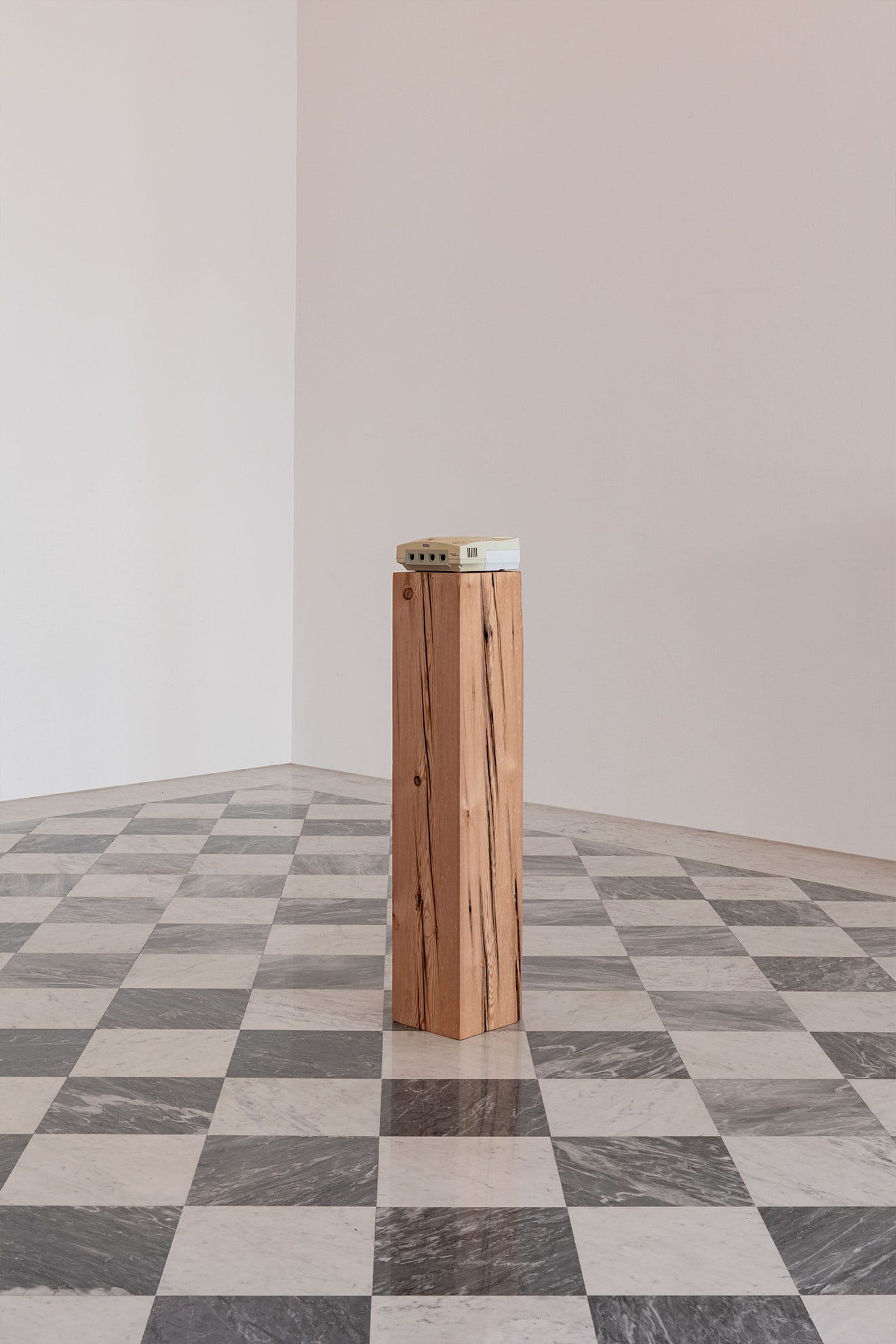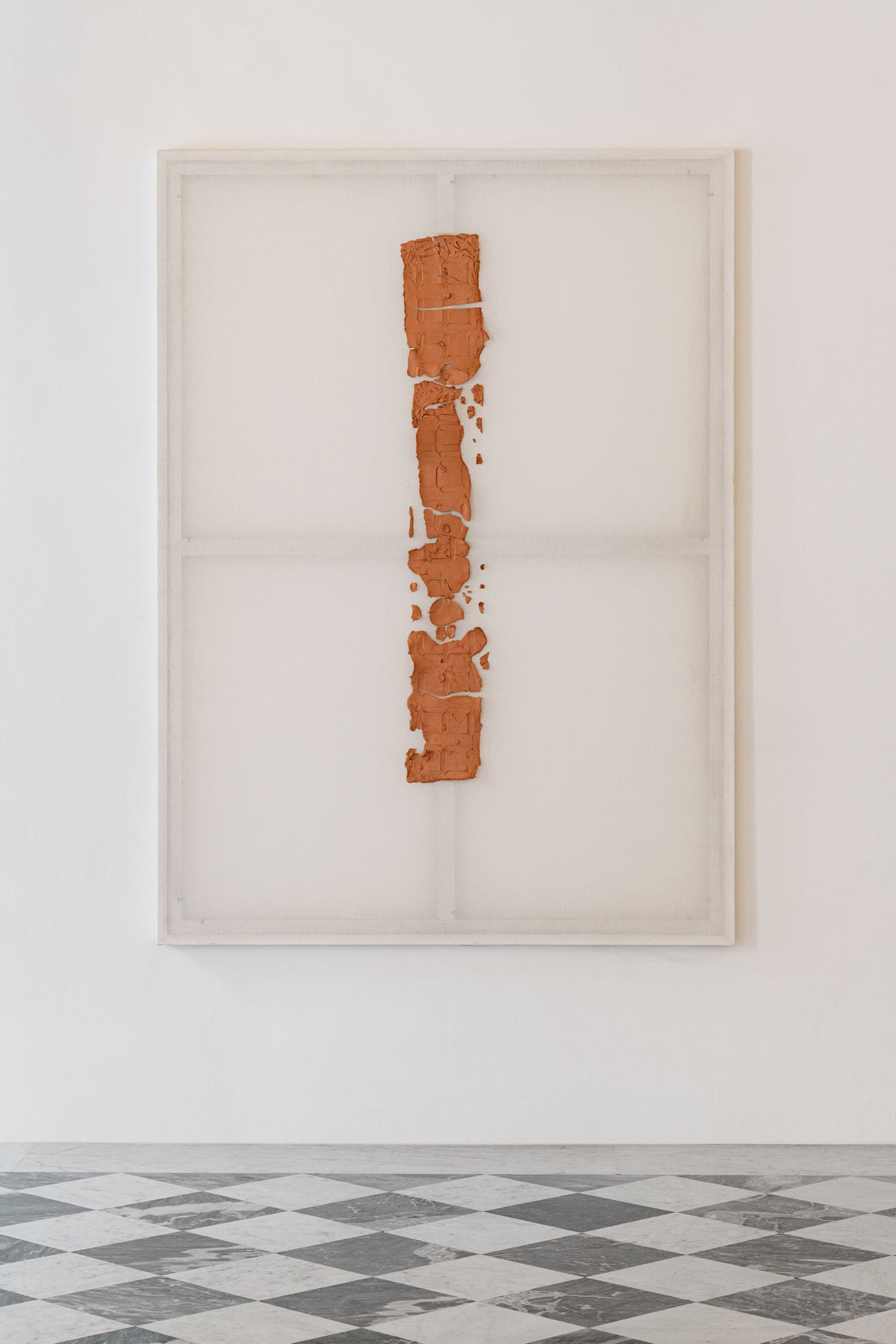SEVEN SEGMENT DISPLAY
Francesco João
curated by Massimiliano Scuderi and Marco Nicodemo






Francesco João
curated by Massimiliano Scuderi and Marco Nicodemo
The collaboration between Zimei Foundation and La Saleriana Collection continues, on this occasion presenting the solo exhibition of Francesco João curated by Massimiliano Scuderi and Marco Nicodemo. This appointment continues the program of exhibitions within the prestigious venue of Palazzo Cavallerini-Lazzaroni, Via dei Barbieri n. 7 in Rome, at Spazio Sette Library.
Francesco João (Milan 1987) lives and works between São Paulo, Brazil and Milan and is certainly one of the most interesting artistic personalities of recent years. Aware of the multiple aspects that pictorial practice induces to consider, his research is defined around conceptual aspects of the pictorial language, such as the processual ones and the structures that articulate the image of painting, declining it from time to time, in its different forms. Starting from the deconstruction of the pictorial gesture, the artist questions its principles and means, analyzing not only the basic elements, such as the canvas, as much as the temporal dimension, in a return to the degree zero of painting.
The exhibition divided into two rooms, consists of a series of works bearing the numerical language of the seven segment display-a particular device with ten numerical digits, through the lighting of Seven luminous segments-that constituted in the 1970s the common image of a futuristic time, thanks to the first digital LED devices that adopted its graphic combinations.
An idea of the future that today we read in retrospect with a certain degree of obsolescence, compared to the plastic purposes it proposed. Alongside these works, series of 12 gouaches and acrylics on raw canvas, begun in 2016-in the first room he presents a series of sculptures and ready-mades from objects he owns, made of various materials. With this large installation he declines in sculptural form the themes of transcendence, economics, time and function.
The artist affirms: The aesthetics of SSD refers to the idea of the future as seen from the past: for me it is a subject that represents a pretext for making “painting” because I see painting as something constantly projected forward (avant-garde?) since cave times where, however, “avant-garde” was replaced by a “function,” in that case, propitiatory to hunting and therefore economic. I have always been interested in the relationship between transcendence and economics. A series of objects, carefully chosen by the artist, are arranged in the palace’s frescoed hall to investigate things and data unmediated by consciousness and unenlightened by deciphering and contextualizing their meaning.
What do the DreamCast video game console, produced in the late 1990s by SEGA, and a tipiti, a kind of straw fabric press used to dry cassava roots, have in common? These are objects that, by their nature, will outlast our oblivion1.
curated by Massimiliano Scuderi and Marco Nicodemo
08.07.2023 – 02.09.2023
The exhibition will be open daily from 10 a.m. to 7:30 p.m.
Palazzo Cavallerini Lazzaroni
Via dei Barbieri 7 | 00186 Roma RM
20 July 2023